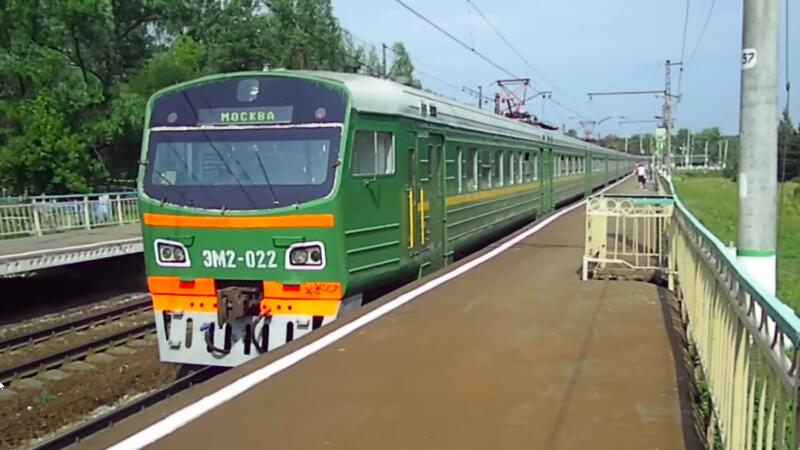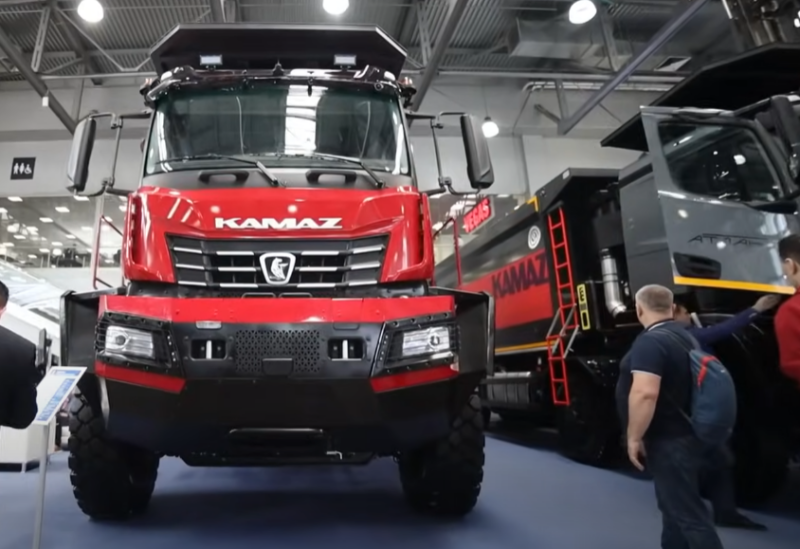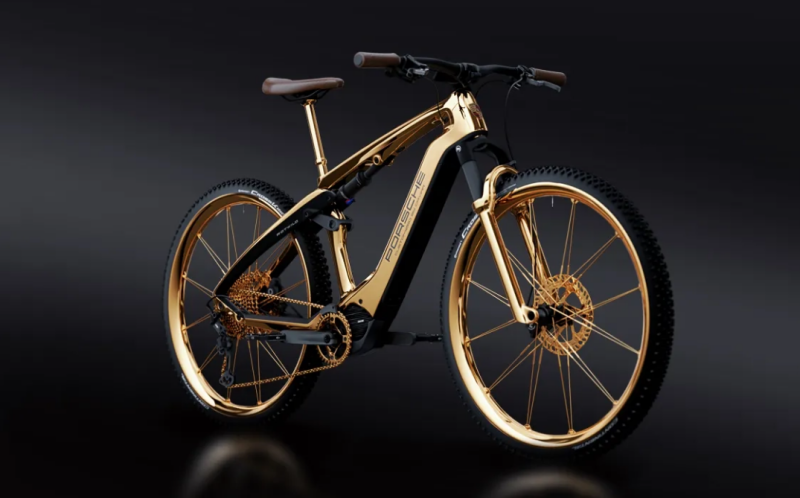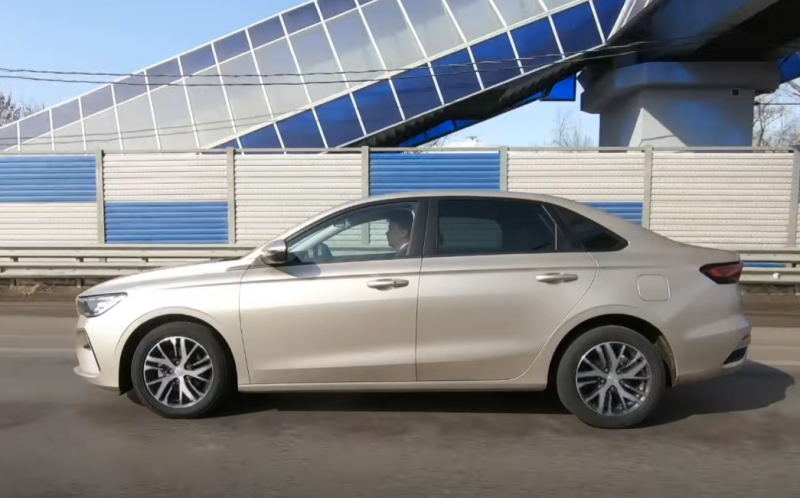This is how Czech locomotives or Hungarian buses came to our country. In the same way, powerful trucks and reliable commuter trains migrated from one union republic to another. But everything changed dramatically in the early 90s. Firstly, everyone very quickly became independent of each other, and secondly, the commercial component suddenly came to the fore.
 EM2 is not the best project for Russian Railways. Photo: youtube.com
EM2 is not the best project for Russian Railways. Photo: youtube.comThe current situation forced everyone to get out as best they could. There was often a lack of funds to purchase new things, and for our own production we needed not only conditions, but also qualified specialists. And all the same huge infusions into the bargain.
Alternative to Riga electric trains
Although there was the Mytishchi (and other) carriage plant on the territory of the Russian Federation, the main load during the Soviet era lay with the Riga enterprise. It was there that many legendary Soviet electric trains saw the light of day. But now all the Baltic republics have become foreign states, with all the consequences.
Therefore, the idea of carrying out a radical modernization of the existing rolling stock on the basis of a Russian enterprise matured. During the 90s, equipment from the Soviet period was still somehow exploited (and there was no free money). But at the beginning of the new millennium, the economy improved a little, and the need for restoration became fully ripe.
It all started in 2001 with the transformation of the Riga composition ER2-1019 into the similar EM1K-1019 (later changed to “2K”). Here the letter “M” indicated that the update was being carried out on the basis of a Moscow enterprise. The initiative was assessed positively, which made it possible to carry out similar actions with train No. 21.
External changes in the image of the commuter electric train were immediately noticeable, thanks to the use of the front part from the more modern ED4M. There were also other updates, which we will discuss below. The main thing was that the process turned into a system, lasting until 2005. During this time, 35 Soviet electric trains were transformed, even giving them a clear serial numbering, ending at the indicator “EM2-035”.
 The “Riga trace” is difficult to hide. Photo: youtube.com
The “Riga trace” is difficult to hide. Photo: youtube.comBut the production process itself lacked the same streamlined system. Trains sometimes differed greatly from each other, both externally and in internal equipment. This depended on a series of technical issues:
✅ availability of components of a certain type
✅ decisions on the inappropriateness of using previously used parts
✅ the approach of the engineering group responsible for this particular instance
The boys' update to the squads from a quarter-century ago turned out to be controversial. The fact that only “horns and legs” remained from the original (in the sense of the chassis and end walls) led to the fact that the project turned out to be very expensive, almost catching up in price with the completely new ED4M. The following elements were established in the homologated compositions:
✅ backlash-free coupling BSU-4
✅ cabin from ED4M (or other contemporaries)
✅ new control panel
Among the external changes were current collectors of the latest design. Inside, the old dull seats were removed, replacing them with more comfortable ones. The composition also changed traction converters. In such a pleasant form, the first samples arrived at the VNIIZhT test site in Shcherbinka. Unfortunately, already in the middle of the summer of 2002, the external gloss of EM2 was broken by the dry numbers of indicators. But they turned out to be very far from what was expected.
An expensive project that brought considerable disappointments
During the testing process, a very wide range of defects and design weaknesses were identified. This led to the fact that until 2004, specialists did not issue the ill-fated EM2I composition with a certificate of compliance with quality indicators. They repeatedly drew attention to the existing discrepancies with the declared characteristics. Even upon receiving the document, it was not without caustic comments and recommendations.
Despite this, the homologation process confidently moved forward, receiving new branches. Some critics even claimed that he was lobbied by those who had a clear financial interest in the events. But we won’t say for sure, because “not caught...” - you understand.
 EM2I – attempt number two. Photo: youtube.com
EM2I – attempt number two. Photo: youtube.comSo, the next direction was the new series, which appeared after the twentieth modernized model. It was called conceptual EM2I. The reconstructed trains were already intended for operation at higher speeds. Their main place of application was the area leading to the Moscow airport. Here electric trains had to accelerate to more than one and a half hundred kilometers per hour (sometimes the bar was set even higher - 200).
You are probably aware that railway workers from different countries give their “wards” characteristic nicknames. They often reflect warmth, tenderness or undisguised love. And sometimes it’s quite the opposite. The created high-speed train received the disparaging name “Maggot” among the people. I think now everyone understands: something went wrong with the designers. Here is an incomplete list of its “jambs”:
✅ radio interference for all services in the area
✅ not very reliable composition design
✅ speed ceiling – no higher than 85 km/h
The reason for the latter was the absence of a field weakening mode for the traction motors. All of the above led to the fact that railway workers urgently needed to look for a worthy alternative. It was made by three copies of the ED4MK specially created by the Demikhovsky plant.
Another problem with unsuccessful alterations was their low maintainability. In addition, due to the unpleasant resonance around them, spare parts for EM2(I) were produced irregularly, leading to frequent shortages. In general, their “favorite” place to stay was the sludge parks in the capital’s depots.
Last attempt to rehabilitate – EM4
Let us note that we dealt with Spetsremont CJSC, and direct alterations were carried out by the Moscow Locomotive Repair Plant. The first of them reached the stage of bankruptcy already in 2007. But on the threshold of these events, the would-be builders decided to make attempts at rehabilitation.
 EM2I, which were never able to develop high speeds. Photo: youtube.com
EM2I, which were never able to develop high speeds. Photo: youtube.comIn 2005, serial production of EM2I began (which lasted just over a year). But the flow of criticism against its design only grew. This is how the idea of creating EM4 - a new suburban type with high dynamic characteristics - appeared. They wanted to offer it for operation in areas stretching to satellite cities. The local traffic mode implied frequent alternation of acceleration and sharp braking.
Everything was very pompous, and the new train for trips to Mytishchi near Moscow was extolled as an almost ideal technology of the future. The hottest heads even rushed to call EM4 the new symbol of Russian Railways. We tried to fit everything for such layouts: a very modern external design, updated interior equipment, along with other benefits of civilization:
✅ barrier-free glazing
✅ three-door carriages
✅ tambourless design
It also had its own, obvious know-how, without which not a single type of European urban transport is unthinkable today. For the first time on Russian roads, EM4 has buttons for self-opening doors. Further operation, however, showed that the new composition was not technically very different from its unsuccessful predecessors.
 EM4 is a sad end to the series. Photo: youtube.com
EM4 is a sad end to the series. Photo: youtube.comOnly a few from this series have survived to this day. Since 2018, EM2I has officially ceased its operation. After a couple of years, the time has come for comfortable EM4s. This experience has shown that remaking the old is often a dead-end branch of development. As they say, only good new can be better than new. This fact is confirmed by modern models of Russian suburban transport.










